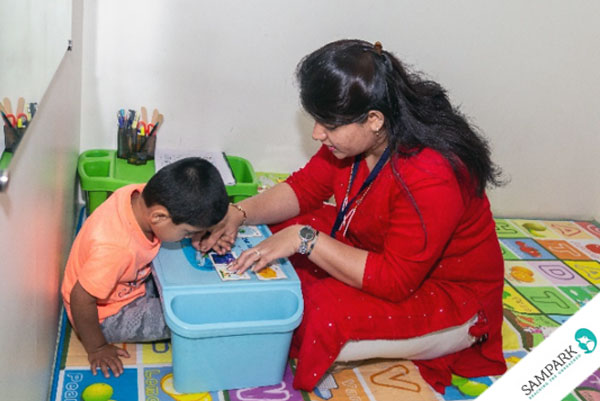
Language Disorders
• Difficulties pronouncing sounds, or articulation disorders, and stuttering are examples of speech disorders. When a person has trouble understanding others (receptive language), or sharing thoughts, ideas, and feelings completely (expressive language), then he or she has a language disorder.
• Acquired language disorders, however, are caused by brain damage sustained during a stroke, seizure, or other head injury. Aside from brain injury or head trauma, some other known causes of acquired language disorders are: Hearing loss at an early age. Neurological disorders
• If your child has been diagnosed with a language disorder, you’ll need a team of experts that includes a speech-language pathologist, audiologist, and specially trained teachers.
• SLPs can help children with language disorders. They work on language problems found during the evaluation. They work with you, teachers, and other professionals to improve speech and language skills. Good language skills help with learning, behavior, self- esteem, and social skills.
• Acquired language disorders, however, are caused by brain damage sustained during a stroke, seizure, or other head injury. Aside from brain injury or head trauma, some other known causes of acquired language disorders are: Hearing loss at an early age. Neurological disorders
• If your child has been diagnosed with a language disorder, you’ll need a team of experts that includes a speech-language pathologist, audiologist, and specially trained teachers.
• SLPs can help children with language disorders. They work on language problems found during the evaluation. They work with you, teachers, and other professionals to improve speech and language skills. Good language skills help with learning, behavior, self- esteem, and social skills.
Speech Sound Disorders
The speech sound disorders (SSD) include Organic and functional disorders. Organic disorders are when there is a known cause. It can be developmental or acquired. The disorders include motor or neurological disorders like dysarthria (execution difficulty)and apraxia (programming and planning difficulty), Structural disorders include cleft lip or palate and other structural deficits due to trauma or any surgery and sensory or perceptual deficit include hearing impairment. Functional disorders includes articulation and phonological disorders. Articulation disorders focus on errors (e.g., distortions and substitutions) in production of individual speech sounds. Phonological disorders focus on predictable, rule-based errors (e.g., fronting, stopping, and final consonant deletion) that affect more than one sound. Articulation disorders may impact a child’s speech intelligibility when communicating with others. If your child or any individual in your family has any of the above mentioned disorders, assessment and intervention by a speech-language pathologist is generally recommended.
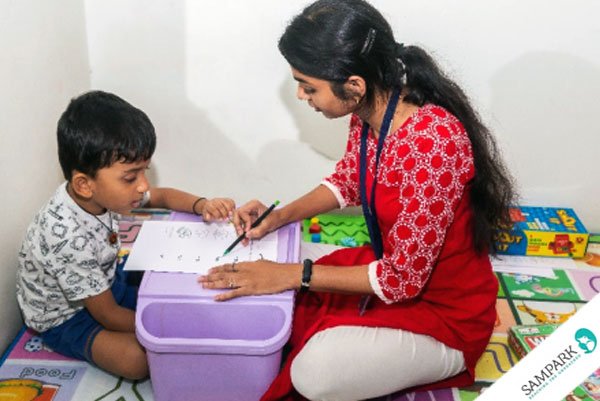

Fluency Disorders
• Fluency is prosodic aspects of speech. It includes continuity, effort rate intonation and stress. A person is said to have fluency in speaking when his or her speech has a uninterrupted continuous flow of words, appropriate pauses and rhythm, intonation and stress patterns.
• Fluency develops from childhood to adolescence period. The development starts early in life and children often exhibit non fluent behaviors between 2-4years of age. This stage is a part of developmental stages and is commonly known as normal non fluency. The children are not so fluent in this phase and often exhibit word repetitions, prolongations and incomplete phrases.
• The behavior however is vulnerable to get converted into actual diffluent behavior if interrupted. Parents usually expect children to speak fluently and often instruct negatively which may affect the child’s development and children may develop stuttering, a type of fluency disorder. Parental pressure and peer pressure being one of the causes of developing dysfluent behavior.
• The fluency disorders can be developmental, psychogenic, neurogenic type. The developmental fluency disorders include stuttering and cluttering. Developmental disorders mainly have onset early in life eg. Below 5 yrs of age. The neurogenic type include stuttering secondary to any neurological conditions such as stroke, Parkinson’s disease, viral infections trauma to brain etc.
• Cluttering is a type of disorder where dysfluent behavior is superficial layer of the problem in which patient usually has fast rate of speech and there is central language imbalance. The individual Voice disorders
• Fluency develops from childhood to adolescence period. The development starts early in life and children often exhibit non fluent behaviors between 2-4years of age. This stage is a part of developmental stages and is commonly known as normal non fluency. The children are not so fluent in this phase and often exhibit word repetitions, prolongations and incomplete phrases.
• The behavior however is vulnerable to get converted into actual diffluent behavior if interrupted. Parents usually expect children to speak fluently and often instruct negatively which may affect the child’s development and children may develop stuttering, a type of fluency disorder. Parental pressure and peer pressure being one of the causes of developing dysfluent behavior.
• The fluency disorders can be developmental, psychogenic, neurogenic type. The developmental fluency disorders include stuttering and cluttering. Developmental disorders mainly have onset early in life eg. Below 5 yrs of age. The neurogenic type include stuttering secondary to any neurological conditions such as stroke, Parkinson’s disease, viral infections trauma to brain etc.
• Cluttering is a type of disorder where dysfluent behavior is superficial layer of the problem in which patient usually has fast rate of speech and there is central language imbalance. The individual Voice disorders
Voice Disorders
• Voice disorders are medical conditions involving abnormal pitch, loudness or quality of the sound produced by the larynx and thereby affecting speech production. Types of voice disorders are:
• Benign non-cancerous growths on the vocal cords are most often caused by voice misuse or overuse, which causes trauma to the vocal cords. These lesions (or "bumps") on the vocal cord(s) alter vocal cord vibration and lead to hoarseness.
• There are four main causes of voice disorders:
A. Vocal abuse
B. Neurogenic disorders
C. Psychogenic disorders
D. Alaryngeal communication
• About 3-6% of school-aged children and 3-9% of adults are affected by voice disorders. • Voice disorders can be assessed and treated by a speech language therapist. Voice therapy provides a very effective and non-surgical solution to voice disorders.
• Benign non-cancerous growths on the vocal cords are most often caused by voice misuse or overuse, which causes trauma to the vocal cords. These lesions (or "bumps") on the vocal cord(s) alter vocal cord vibration and lead to hoarseness.
• There are four main causes of voice disorders:
A. Vocal abuse
B. Neurogenic disorders
C. Psychogenic disorders
D. Alaryngeal communication
• About 3-6% of school-aged children and 3-9% of adults are affected by voice disorders. • Voice disorders can be assessed and treated by a speech language therapist. Voice therapy provides a very effective and non-surgical solution to voice disorders.
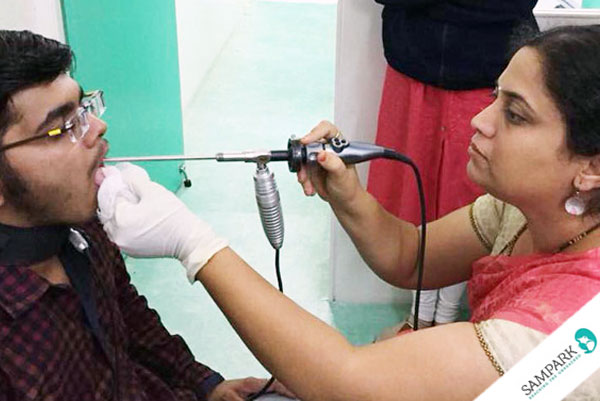
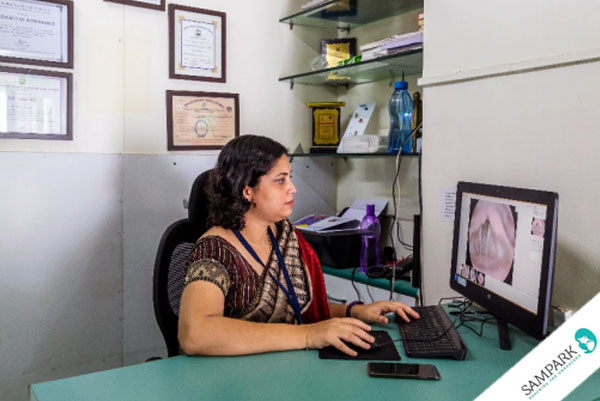
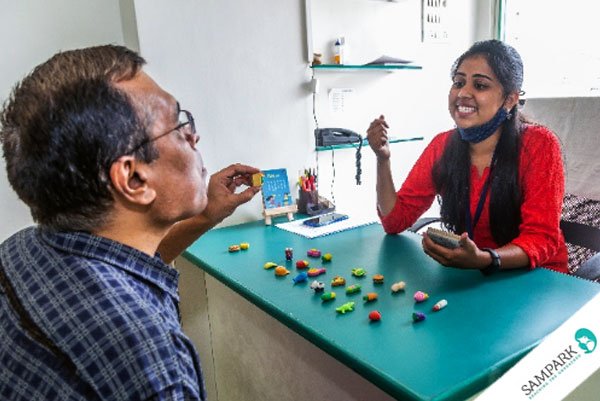
Cognitive Communication Disorders
Cognitive-communication disorders are problems with communication that have an underlying cause in a cognitive deficit rather than a primary language or speech deficit. A cognitive-communication disorder results from impaired functioning of one or more cognitive processes like attention, memory, insight and judgement, perception, organization, orientation, processing speed, problem solving, reasoning, executive functioning and metacognition. These cognitive processes are not isolated abilities. They work together. A problem with one or more cognitive functions can cause difficulty performing activities of daily living safely & efficiently as well as communicating effectively. An evaluation by a speech-language pathologist can determine where impairments exist & how to treat them. A person with a cognitive-communication disorder may have difficulty paying attention to a conversation, staying on topic, remembering information, responding accurately, understanding jokes or metaphors, or following directions. A cognitive-communication disorder can also result from a traumatic brain injury (TBI), a brain infection, a brain tumor, or a degenerative disease such as multiple sclerosis, Parkinson’s disease, Alzheimer's disease, or another form of dementia. Cognitive-communication disorders can occur alone or in combination with other conditions, such as dysarthria (slurred speech), apraxia (inability to move the face and tongue muscles correctly to form words), or aphasia (impaired language). Speech language pathologist assess the individual and identify the cause and severity and looks each case as unique and providing different treatments.

